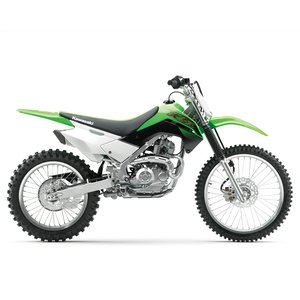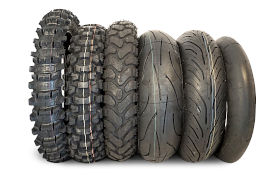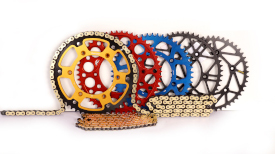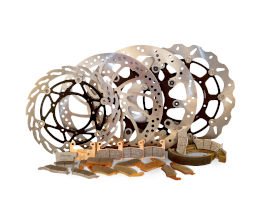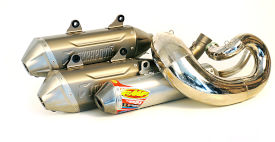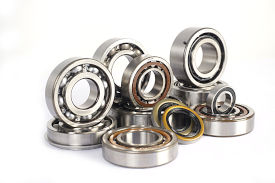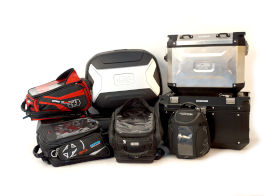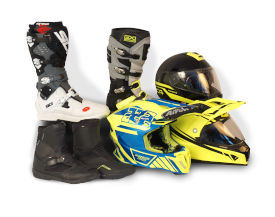Kawasaki KLX 140 [2008–2019]: A Trail-Ready Companion for Riders of All Levels
Introduction
The Kawasaki KLX 140 isn’t just a motorcycle—it’s a gateway to off-road adventure. Designed as a lightweight, approachable enduro bike, this model generation (2008–2019) has earned a reputation for reliability and versatility. Whether you’re a novice rider building confidence or a seasoned trail enthusiast looking for a nimble play bike, the KLX 140 delivers. Over its 11-year production run, Kawasaki offered three variants: the base KLX 140, the taller KLX 140L, and the aggressive KLX 140G, each tailored to different rider heights and terrain demands.
I recently spent a day tearing through wooded trails and rocky paths on a 2018 KLX 140L, and it quickly became clear why this bike remains a favorite. Its simplicity is its strength—no frills, no overwhelming power, just pure, unfiltered fun. Let’s dive into what makes this generation tick.
Design and Ergonomics
The KLX 140’s design is a masterclass in functional minimalism. Its high-tensile steel perimeter frame balances durability and lightweight handling, tipping the scales at 93–99 kg (205–218 lbs) depending on the variant. The signature Kawasaki Lime Green color scheme pops against muddy trails, while Monster Energy editions (2009–2010) swapped green for stealthy Ebony graphics—a collector’s touch today.
Ergonomics are where the KLX 140 shines. The base model’s 780 mm (30.7 in) seat height is forgiving for shorter riders, while the 140L (800 mm/31.5 in) and 140G (861 mm/33.9 in) cater to taller frames. Even at 5’8”, I appreciated the 140L’s neutral riding position—knees hugged the tank comfortably, and the narrow seat made shifting weight mid-corner effortless. The rubber-mounted footpegs and grippy seat material kept fatigue at bay during a 3-hour ride.
One quibble? The analog speedometer (on earlier models) feels dated next to modern digital dashes, but let’s be real—you’re not checking your speed when dodging tree roots.
Engine and Performance
At the heart of the KLX 140 beats a 144cc air-cooled SOHC single-cylinder engine. It’s carbureted (Keihin PB20), which purists will love for its mechanical simplicity, though altitude changes demand occasional jetting adjustments. With a 9.5:1 compression ratio and a 5-speed transmission, this mill prioritizes tractable torque over outright speed.
Twist the throttle, and the KLX responds with a linear surge rather than a violent hit. First gear crawls up steep inclines without stalling, while fifth gear tops out around 85 km/h (53 mph)—enough for fire roads but not highway stretches. The engine’s muted growl is music to trail riders’ ears, though aftermarket exhausts (like those sold at MOTOPARTS.store) can amplify the soundtrack.
Cold starts are a non-issue thanks to the electric starter (standard on most post-2010 models). Pre-2009 bikes included a kickstarter backup, a nice touch for remote rides.
Handling and Suspension
Where the KLX 140 truly earns its stripes is in the dirt. The 33mm telescopic fork and Uni-Trak rear suspension (with adjustable preload and rebound damping on the L/G models) soak up bumps like a sponge. Even at speed through a rock garden, the 140L’s 180 mm (7.1 in) of wheel travel never felt overwhelmed.
The 140G, with its 21”/18” spoked wheels (vs. the 140L’s 19”/16”), floats over deep ruts and moonlit whoops. Meanwhile, the base model’s smaller 17”/14” wheels make it a hoot for younger riders on tight singletrack.
Braking is confident, if not groundbreaking. The 220 mm petal disc up front (dual-piston caliper) provides ample stopping power, though the rear drum on early models lacks bite in muddy conditions—a common upgrade is swapping to a rear disc kit.
Competition
The KLX 140’s rivals include the Honda CRF125F, Yamaha TT-R125LE, and Suzuki DR-Z125. Here’s how they stack up:
| Feature | KLX 140 | Honda CRF125F | Yamaha TT-R125LE |
|------------------------|----------------------------------|-------------------------|-------------------------|
| Engine | 144cc air-cooled | 125cc air-cooled | 125cc air-cooled |
| Suspension Adjustability| Preload/Rebound (L/G) | Non-adjustable | Preload Only |
| Starter | Electric (standard on most) | Kickstart | Electric |
| Weight | 93–99 kg (205–218 lbs) | 89 kg (196 lbs) | 95 kg (209 lbs) |
The KLX’s larger displacement and suspension tweaks give it an edge in technical terrain, while the Honda and Yamaha counter with slightly lighter builds. However, the Kawasaki’s electric starter (absent on the CRF125F) is a game-changer for stop-and-go trails.
Maintenance
The KLX 140 is a low-maintenance workhorse, but neglect it at your peril. Here’s how to keep it thriving:
- Air Filter Care: The carburetor hates dirt. Clean the foam filter after every dusty ride—MOTOPARTS.store stocks pre-oiled filters for quick swaps.
- Oil Changes: Kawasaki recommends fresh 10W-40 every 20 hours. Don’t skip this—the air-cooled engine runs hotter than liquid-cooled rivals.
- Chain Adjustments: The O-ring chain stretches over time. Keep slack at 50–60 mm (2–2.4 in) to avoid premature sprocket wear.
- Suspension Tuning: Upgrade the fork oil to a heavier weight (e.g., 15W) for aggressive riders. The 140G’s piggyback reservoir shock benefits from periodic nitrogen checks.
Common Upgrades:
- Exhaust Systems: A full aftermarket pipe can unlock 1-2 HP.
- Handlebar Risers: Improve comfort for taller riders.
- Skid Plates: Essential for rocky terrain.
Final Thoughts
The Kawasaki KLX 140 is the Swiss Army knife of trail bikes—compact, adaptable, and endlessly dependable. While it won’t win races against 250cc beasts, it’s a machine that rewards skill and forgives mistakes. Whether you’re resurrecting a 2008 model or upgrading a 2019 edition, MOTOPARTS.store has the gear to keep your KLX shredding trails for another decade.
Now, grab your helmet—those woods aren’t going to explore themselves.
Specifications sheet
| Engine | |
|---|---|
| Stroke: | Four-stroke |
| Starter: | Electric (Electric & kick on some earlier models) |
| Fuel system: | Carburettor, Keihin PB20 |
| Displacement: | 144 ccm |
| Fuel control: | Single Overhead Cams (SOHC) |
| Configuration: | Single |
| Cooling system: | Air |
| Compression ratio: | 9.5:1 |
| Lubrication system: | Forced, semi-dry sump (2008 models) |
| Number of cylinders: | 1 |
| Dimensions | |
|---|---|
| Wheelbase: | 1260 mm (49.6 in) (1285 mm on KLX140L, 1331 mm on KLX140G) |
| Dry weight: | 88 |
| Wet weight: | 93 |
| Seat height: | 780 mm (30.7 in) (800 mm on KLX140L, 861 mm on KLX140G) |
| Ground clearance: | 236 mm (9.3 in) (254 mm on KLX140L, 315 mm on KLX140G) |
| Fuel tank capacity: | 5.68 L (1.50 US gal) |
| Drivetrain | |
|---|---|
| Clutch: | Multiplate wet |
| Final drive: | chain |
| Transmission: | 5-speed |
| Maintainance | |
|---|---|
| Rear tire: | 90/100-14 (90/100-16 on klx140l, 4.10-18 on klx140g) |
| Engine oil: | 10W-40 |
| Front tire: | 70/100-17 (70/100-19 on klx140l, 2.75-21 on klx140g) |
| Break fluid: | DOT 4 |
| Spark plugs: | NGK CR8E |
| Coolant capacity: | 0 |
| Forks oil capacity: | 0.7 |
| Engine oil capacity: | 1.2 |
| Engine oil change interval: | Every 2000km or annually |
| Valve clearance (intake, cold): | 0.10–0.15 mm |
| Valve clearance (exhaust, cold): | 0.20–0.25 mm |
| Additional Notes | |
|---|---|
| Variants: | KLX140 (base), KLX140L (larger wheels), KLX140G (long-travel suspension) |
| Warranty: | 6-month factory warranty |
| Color options: | Lime Green (Ebony on Monster Energy editions) |
| Chassis and Suspension | |
|---|---|
| Frame: | High-Tensile steel, box-section perimeter (Tube, semi-double cradle on KLX140G) |
| Rear brakes: | Single petal disc with single-piston caliper |
| Front brakes: | Single petal disc with dual-piston caliper |
| Rear suspension: | UNI-TRAK linkage system with adjustable preload (Rebound damping on L/G models) |
| Front suspension: | 33mm telescopic fork |
| Rake (fork angle): | 27.0° |
| Rear wheel travel: | 180 mm (201 mm on KLX140G) |
| Front wheel travel: | 180 mm (191 mm on KLX140G) |



